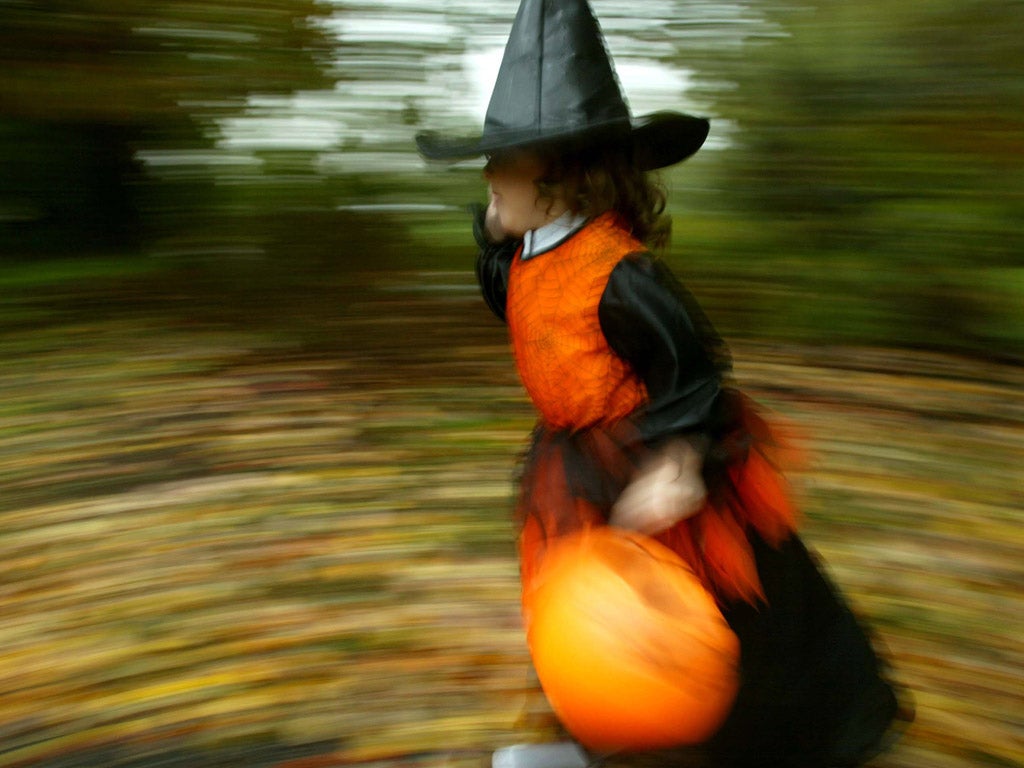For many of us today Halloween is a commercial tradition made popular in America, where pumpkin-head lanterns in front of doors lure children to come and Trick-or-Treat while dressed as skeletons, witches, or ghosts – and sometimes even Dracula.
But Dracula was a creation of Victorian gothic literature. What relevance could that vampire have to the ancient Celtic festival known as Samain or ‘Sow in’ – an event which marked the coming New Year, when the harvest had been gathered in and the dread dark winter lay ahead?
On its eve, the divisions between the living and dead were said to draw back like a curtain, allowing supernatural folk and the souls of the dead to re-enter the world.
Bonfires and fancy dress parades might drive the risen dead away. If not, they could be placated with food left in bowls outside locked doors. The advent of Christianity then appropriated these customs, with ‘All-Hallowmas’ or ‘All Saint’s Day’ revering saints and martyrs instead of pagan ghouls. And yet, as so often when cultures merge, remnants of both traditions remained. The gifts of food became ‘soul cakes’ left out for the homeless and hungry, in return for which they prayed for the dead. (Would our Trick-or-Treaters agree to that?)
Many other old superstitions persisted. American Irish émigrés replaced the carving of turnip heads with pumpkin Jack-o-Lanterns – Jack being the folklore rogue who offended both the Devil and God, thereafter excluded from Heaven and Hell and walking the earth till Judgment Day. Other Celtic customs were described in Rabbie Burns’ poem, Halloween, in which fairies dance on a moonlit night while youths go out to the countryside, singing songs, telling spooky tales and jokes, or partaking in fortune-telling games; such as eating apples while looking in mirrors and that way creating a magic spell to reveal the face of a future love.
Whether Queen Victoria ever did that, she certainly entered the spirit of things when joining the annual fire-lit procession that took place at Balmoral castle. However, back in England, the rise of the Protestant Church meant that Halloween rituals had fallen away – perhaps explaining Charles Dickens’ shock when he travelled to America and witnessed the general festivities there. But what really piqued his interest (rather than the parties and popular games) was the morbid fascination with ghosts.
It is surely no coincidence that after returning to England he wrote A Christmas Carol, in which spirits and future predictions abound. Other established authors went on to peel back age-old layers of myth, and the genre of ‘All Hallows’ Eve’ was soon very popular indeed, with tales of children stolen by fairies, or mirrors exposing some ghastly event, or women who wailed by misty graves – and all rendered yet more sinister when read by flickering candlelight, or else with the shush of spluttering gas to provide an eerie atmosphere.
The Victorians reveled in frightening tales. More than that, they embraced the culture of death. Many visited spiritualist mediums, or commissioned spirit photographers; the living duped into the belief that crudely exposed double negatives had captured some vision of their dead: all those veiled apparitions that lingered in shadows; no longer just at Halloween.
Today we may be less naïve regarding the existence of ghosts. But the night of 31 October still holds a particular allure. Whether linked to innocent children’s games, or the horror films we view on screens, there is nothing quite like a Halloween thrill. That’s why the author, Neil Gaimon, has proposed the idea of ‘All Hallow’s Read’, what he hopes will become a future tradition in which we exchange scary books to read; a treat more enduring than sweets or cakes.
And the book I will be passing on? I think ‘Dracula’ will do very well, being one of those tortured Undead souls who would walk the earth at Halloween – though I might also take the precaution of leaving some gifts at the door, perhaps a bloody black pudding or two to placate any hungry vampire.
Essie Fox’s novels, ‘The Somnambulist’ and ‘Elijah’s Mermaid’ contain many ghostly elements of Victorian gothic literature http://www.allhallowsread.com/


Join our commenting forum
Join thought-provoking conversations, follow other Independent readers and see their replies